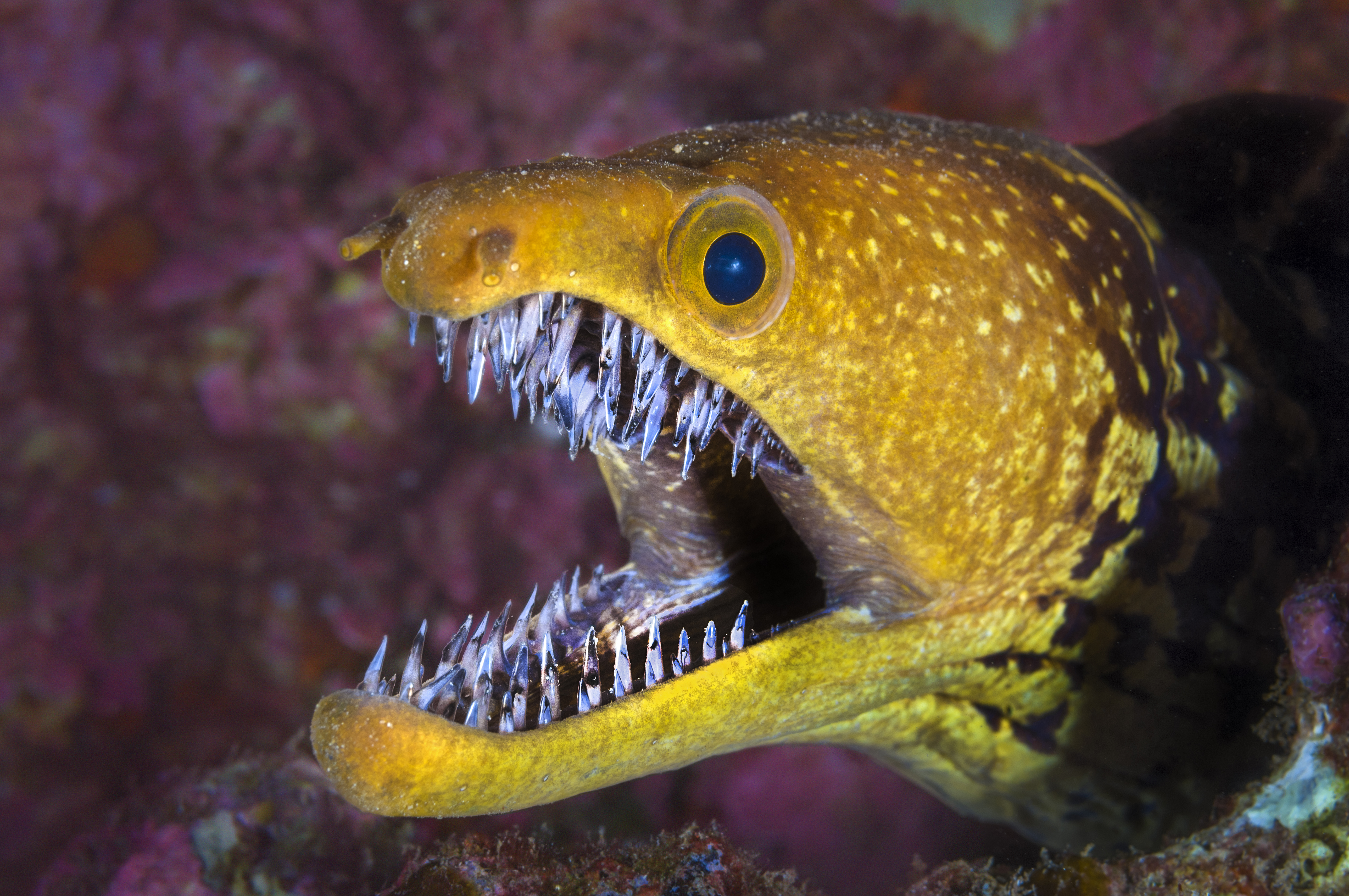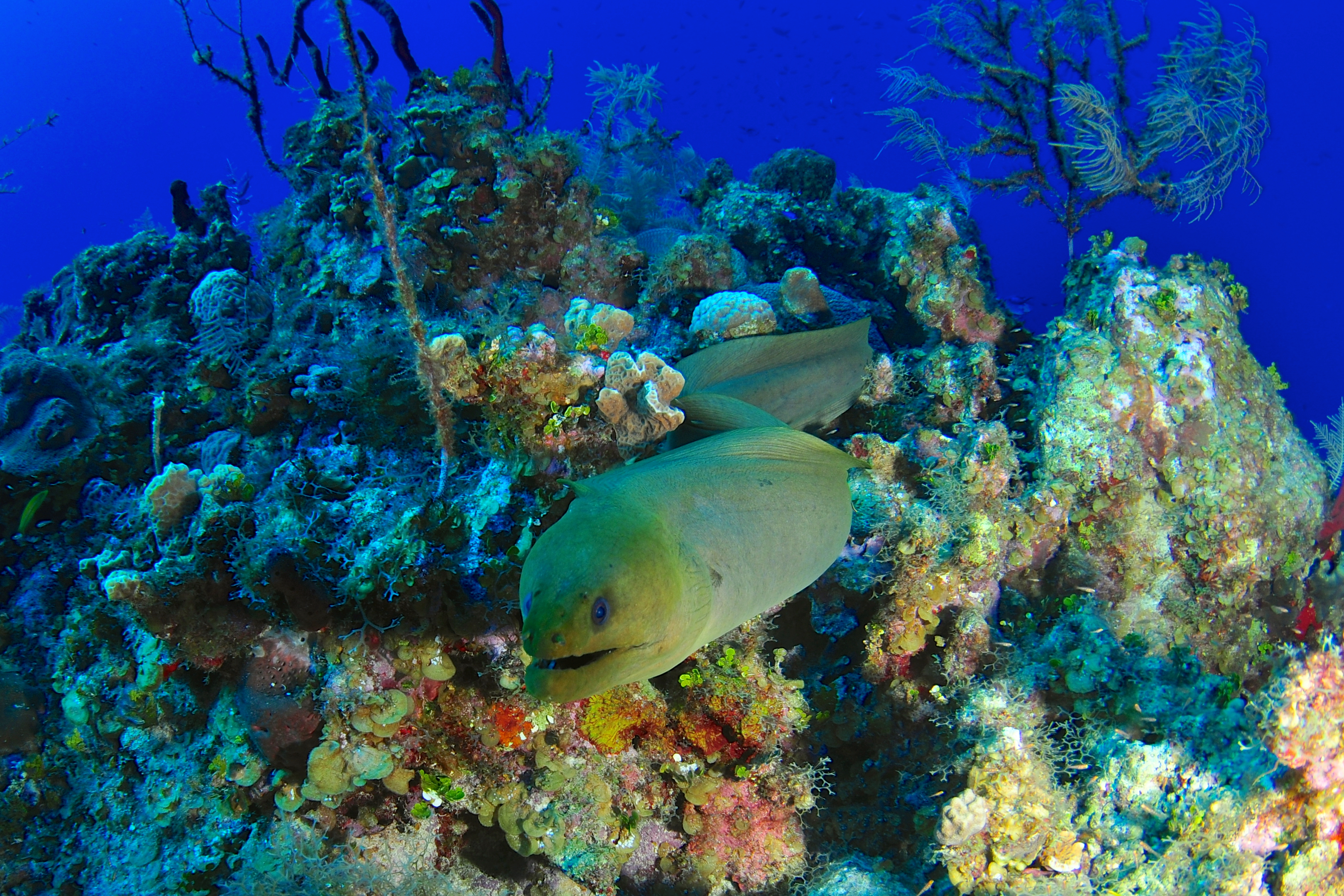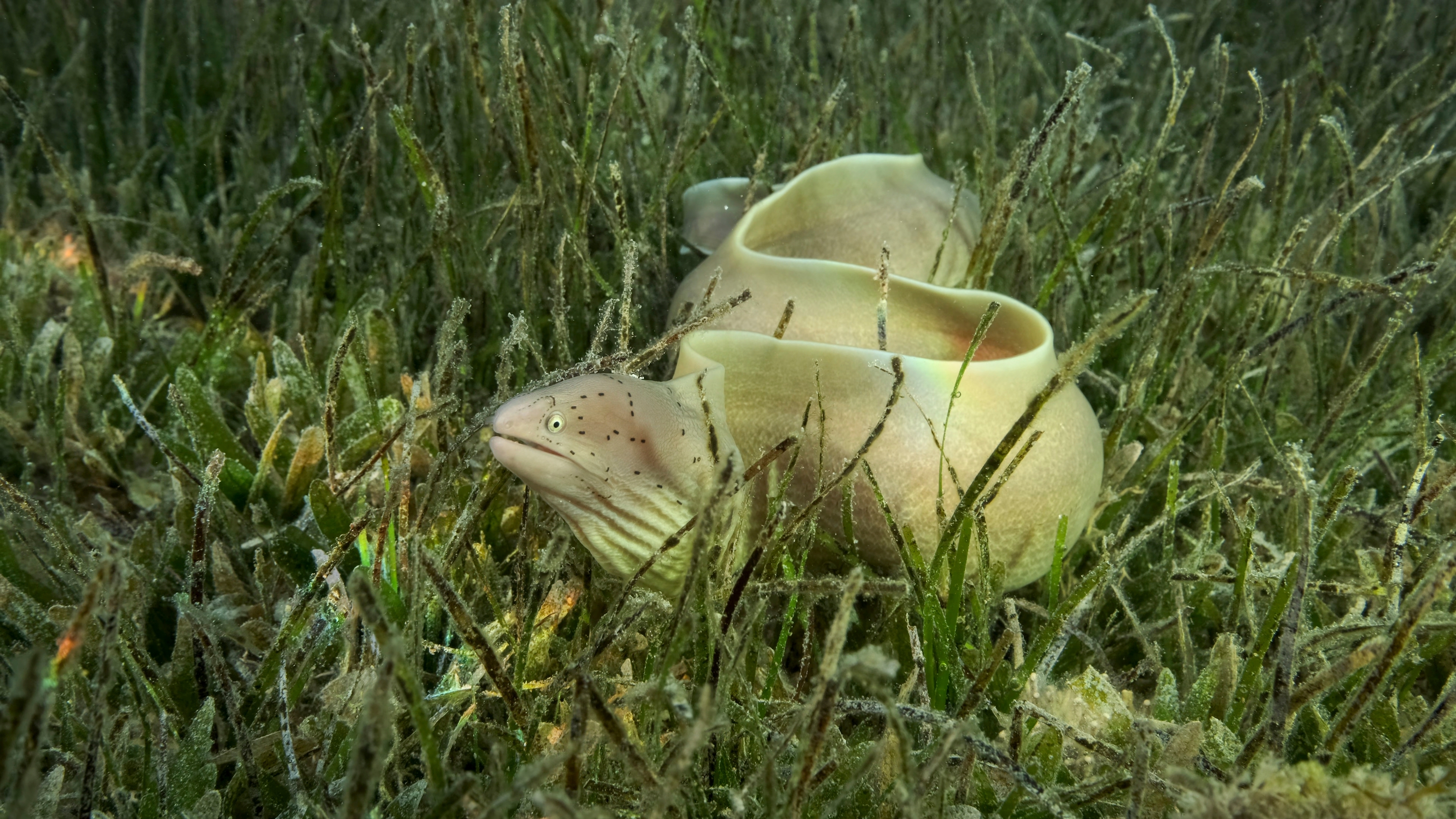Moray eel is one of a group of over 200 species (kinds) of long, thin fish. Morays range in size from a few inches (centimeters) to over 12 feet (3.7 meters) in total length as adults. They are much longer than they are wide or tall. Moray eels live in every ocean basin on Earth. Some species even live in brackish (slightly salty) or fresh water. They are commonly found on shallow coral reefs but may also live in mud flats or rocky bottoms, sometimes at depths of several hundreds of feet (meters). Different species of moray eels can have remarkably different color patterns, from bright, rich colors to spots, zebra stripes, and everything in between. Some species, such as the ribbon moray, change their sex and their color pattern as they age.

Moray eels are solitary and often eat other fish. They also feed on squid, small crustaceans, and bivalve mollusks (animals with a two-piece shell). They are mostly ambush predators that sit very still and wait for prey items to pass nearby before striking and capturing them. However, some species actively stalk their prey. Some morays are even known to jump out of the water at low tide to catch crabs.

Morays have two sets of jaws. They have typical oral jaws like most fish, but they also have a second set of jaws in their throat or pharynx, called pharyngeal jaws. Many fish have pharyngeal jaws, but moray pharyngeal jaws are unique because they have long teeth that curve backward and the jaws can be launched into the oral cavity to help capture and swallow prey whole. Morays will catch their prey with their oral jaws and use their pharyngeal jaws to pull the prey items down their throat.
Moray eels reproduce by external fertilization (male and female sex cells unite outside the female’s body), sometimes in pairs but also in large groups. Their larvae are called leptocephalus larvae, and resemble a very long, thin, and transparent leaf. The larvae drift in open ocean currents for months to over a year, until they find a new coral reef or rocky area to colonize. Once the larvae settle down, they spend almost their entire life within a small area of reef. Moray eels can live to be several years old in the wild. In captivity, they can live more than 20 years.

